Just finished cleaning up a hacked client whose website is hosted on Rackspace Cloud hosting. It is the second one within the past few weeks, although the first one was actually hosting on Laughing Squid, which happens to use Rackspace Cloud. I had discovered that there were a large number of people all on the same IP as my client a couple of weeks ago who all got hacked, but I was having trouble determining if it was an issue with Laughing Squid or an issue with Rackspace Cloud itself, so I didn’t blog about it until I could research it more. I wish now that I had, because maybe then it would not have spread so widely. As it is, it is the same WordPress attack that Unmask Parasites blogged about earlier today.
It looks like the culprit might have been a security hole in phpmyadmin. Hopefully this will turn out to be what was wrong,
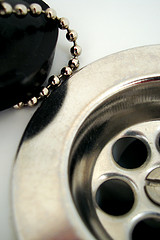 I work from my house and keep odd hours, so when a family member needs some sort of worker let into their house during the day I am often asked if I am available to do it. I don’t mind, we all live fairly close together, and it’s not that much of a hassle on most days. Tonight my mom called and asked me if I could let someone in to her place tomorrow to look at her tub, because it’s clogged. She’s tried Drano twice, poured boiling hot water in it, and even tried plunging it, all to no avail. I told her it would be no problem for me to let someone in.
I work from my house and keep odd hours, so when a family member needs some sort of worker let into their house during the day I am often asked if I am available to do it. I don’t mind, we all live fairly close together, and it’s not that much of a hassle on most days. Tonight my mom called and asked me if I could let someone in to her place tomorrow to look at her tub, because it’s clogged. She’s tried Drano twice, poured boiling hot water in it, and even tried plunging it, all to no avail. I told her it would be no problem for me to let someone in.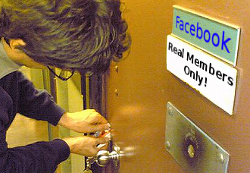 Over the past few weeks I have noticed a sharp increase of scammers trying to get my Facebook password, and not too long ago a few people I know actually fell prey to it. Recently there was an outbreak of of similar activity on
Over the past few weeks I have noticed a sharp increase of scammers trying to get my Facebook password, and not too long ago a few people I know actually fell prey to it. Recently there was an outbreak of of similar activity on 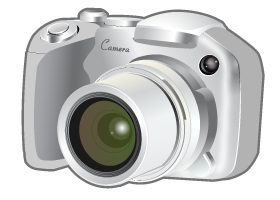 Adding images to your blog posts can make them much more visually appealing to your readers. This in turn can increase the likelihood that someone will link to that post or subscribe to your feed, which will of course in the long run help to improve your rankings and traffic. The internet is chock full of images, many of which will fit perfectly with that blog post or article that you are writing. The problem is, however, finding images that are both high quality and that you are actually allowed to use.
Adding images to your blog posts can make them much more visually appealing to your readers. This in turn can increase the likelihood that someone will link to that post or subscribe to your feed, which will of course in the long run help to improve your rankings and traffic. The internet is chock full of images, many of which will fit perfectly with that blog post or article that you are writing. The problem is, however, finding images that are both high quality and that you are actually allowed to use.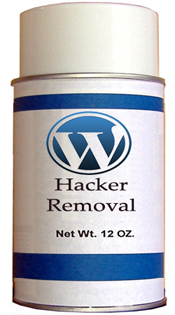 Getting hacked sucks, plain and simple. It can affect your rankings, cause your readership to be exposed to virus and trojan attacks, make you an unwilling promoter to subject material you may not actually endorse, and in many cases cause the loss of valuable content. However, once it happens it is usually best to not procrastinate on the clean up process,
Getting hacked sucks, plain and simple. It can affect your rankings, cause your readership to be exposed to virus and trojan attacks, make you an unwilling promoter to subject material you may not actually endorse, and in many cases cause the loss of valuable content. However, once it happens it is usually best to not procrastinate on the clean up process, 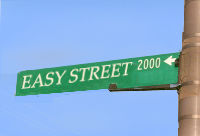 Let’s face it… generally speaking, installing WordPress is not exactly an arduous task. It’s designed to be relatively easy, allowing pretty much anyone to set up a blog of their own, regardless of their technical expertise. For the most part, WordPress succeeds at this. However,
Let’s face it… generally speaking, installing WordPress is not exactly an arduous task. It’s designed to be relatively easy, allowing pretty much anyone to set up a blog of their own, regardless of their technical expertise. For the most part, WordPress succeeds at this. However, 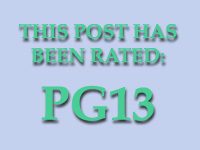 No, my blog wasn’t hacked by porno webmasters, and no, I’m not converting Smackdown to an adult website (although, to be honest, kids or sensitive people should always approach my blog with caution). I wanted to test some of the various image search algos, and as it just so happens the search [Evan Rachel Woods Topless] currently brings up no valid results on Google Images (which kind of surprised me, but more on that at the end). Since I am also releasing a WordPress plugin to help prevent comment spam (which blogs coming up for queries like that probably encounter a ton of) and a very nifty little widget that helps turn image and bandwidth theft into links, I figured I would do all 3 at once. I promise, I am putting all of the questionable images way below the fold… so if you are the sensitive type,
No, my blog wasn’t hacked by porno webmasters, and no, I’m not converting Smackdown to an adult website (although, to be honest, kids or sensitive people should always approach my blog with caution). I wanted to test some of the various image search algos, and as it just so happens the search [Evan Rachel Woods Topless] currently brings up no valid results on Google Images (which kind of surprised me, but more on that at the end). Since I am also releasing a WordPress plugin to help prevent comment spam (which blogs coming up for queries like that probably encounter a ton of) and a very nifty little widget that helps turn image and bandwidth theft into links, I figured I would do all 3 at once. I promise, I am putting all of the questionable images way below the fold… so if you are the sensitive type,